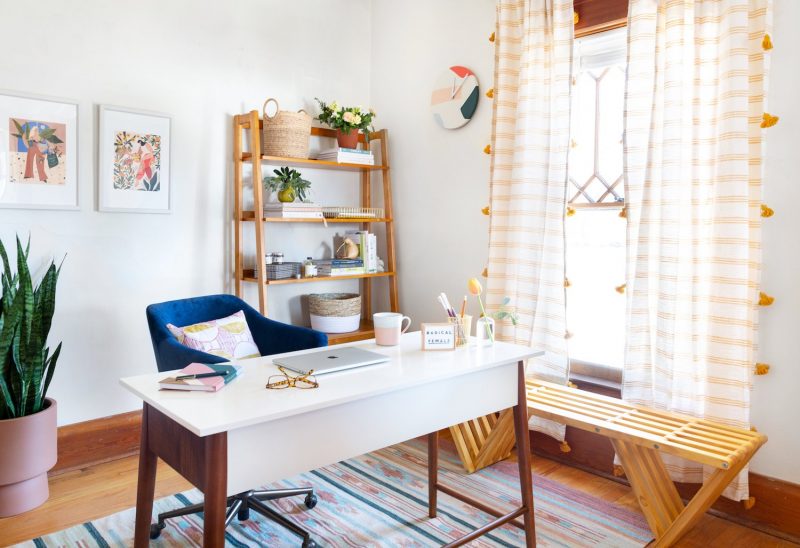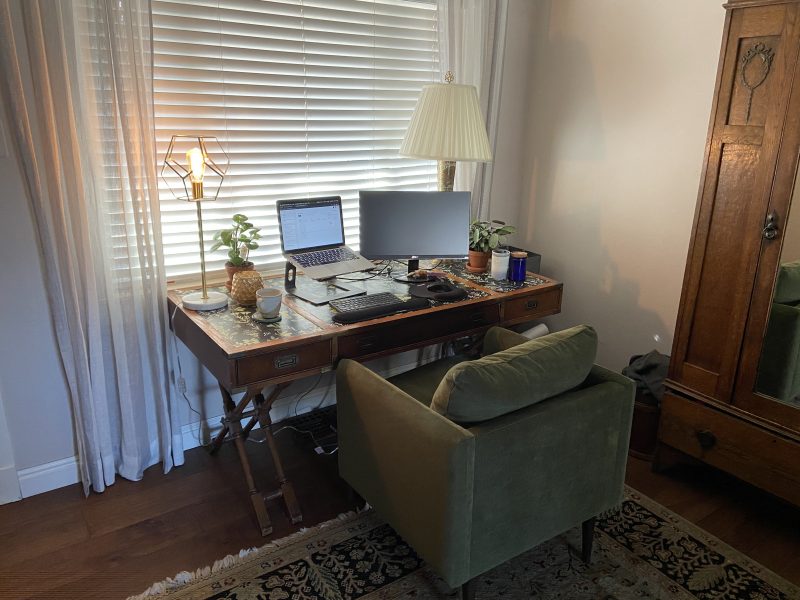You’re working from home. We’re working from home. Let’s talk about how to make working from home better.
If you’re new to remote work, you may be surprised by how easy it is for your work day to become an uninterrupted slog of assignments, emails, deadlines and video conferences. (On that note: Try our designer conferencing video backgrounds).
That’s because you’re now operating without the usual guardrails of a morning and evening commute, a set lunch hour and impromptu coffee breaks with your cubicle neighbor. That lack of a framework isn’t good for your mindset, your productivity or the quality of your work.
That’s why it’s wise to establish new work habits that “punctuate” your day with a predictable routine–one that builds in breaks away from your workspace. Adding structure to your day ultimately increases efficiency, saves time and helps you get into a flow.
Here are a few tips for creating a healthy rhythm when working remotely.

Now that your commute is from one room to another, think about how you can develop a morning ritual that allows you to transition into work mode slowly and thoughtfully.
Enjoy your morning coffee or tea, and a real breakfast, prior to sitting down at your laptop.
Treat yourself to an act of self-care. Enjoy some playtime with your pet. Put on your favorite music. Read something inspirational.
And dress the part of going to work. Even the nicest yoga pants don’t tell your brain, “It’s go-time.” What you wear actually affects brain function. It’s a phenomenon called “enclothed cognition.”
“Treat sitting down at your desk (or sofa or other makeshift workspace) as if you’re walking into the office,” says Lee, Havenly’s founder and CEO. “Starting off the day on a productive note is the best way to ensure you tackle your priorities.”

As much as your work (and your boss) will allow, set regular times for start up and shut down– and stick to them.
It’s also helpful to establish rules of engagement with your colleagues and others in your home. Are you OK with co-workers contacting you in the evening, for example? When is it all right for your housemate to enter your work area for a non-essential chat?
Perhaps most importantly, schedule time for mid-morning and mid-afternoon breaks. Develop a regular cadence and do whatever refuels you physically or gives your mind a rest.
Walk around your house or apartment, simply for the change of scenery. Whip up a dalgona coffee. Catch up on Instagram or TikTok or the distraction of your choice.
Or be mindful. Headspace has curated guided meditations, as short as three minutes, to help us navigate these trying times.
At midday, make a quick but nutritious lunch. Eat with your housemates, if that’s an option, but definitely do not dine al desko.
You might want to schedule time to be social with your colleagues, if you miss office small talk. Think about hosting a virtual coffee break for a few minutes of catch-up time (no shop talk allowed).
And, as long as you observe social distancing, be religious about scheduling time with nature.
Maybe that means just opening your window for some fresh air, taking in the view from your balcony, checking the progress of your herb garden or fetching the snail mail.
Those small moments are greatly beneficial: Interacting with nature is associated with better health.
One last tip: Some people light a scented candle on their desk to symbolize that it’s time to start working. (The flame adds a lovely glow to spreadsheets.) When they blow out the candle at the end of the day, it’s another signal to their brain that work is done until tomorrow.

Whether you’re working from your sofa or your dining room table, the lines between personal and professional can blur. Stick to your rule about when you’ll wrap up for the day, then exit your work programs and step away from the screen.
If you can physically shut a door on your workspace until the next morning, great. If you can take a walk or hit the yoga mat to separate work and home life for even half an hour, even better. The transition out of work mode in the afternoon is just as important as the transition into work mode in the morning.
Change into something more comfortable and enjoy an evening that refuels you mentally, physically and spiritually.

Your weekends are yours to relish, at least as much as they were when you commuted to work. Keep them sacrosanct.
Plan a special activity that will get you out of the house (safely and always with social distancing in mind). Visit a park in a neighboring county or explore a different route through your neighborhood on foot or on your bike.
Staying indoors? Coordinate a virtual happy hour, dinner party or game night. Rearrange your furniture. Cook. Craft. Knit. Read.
Reconnect with someone you’ve lost touch with, even if that person is you.

